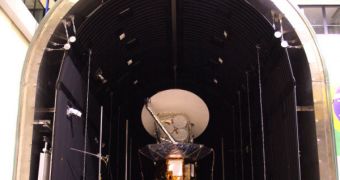On Thanksgiving weekend, NASA experts will fly down to Brazil to test an instrument that will be launched into space aboard a satellite next year. The mission is a collaboration between Argentina and the United States.
The new instrument is called Aquarius, and it will be integrated on the Satelite de Aplicaciones Cientificas (SAC-D) spacecraft early next year. It's job will be to measure changes in salinity affecting the global ocean, experts say.
It was developed by a collaboration of experts that includes researchers at the NASA Jet Propulsion Laboratory (JPL), in Pasadena, California, and the Greenbelt, Maryland-based Goddard Space Flight Center (GSFC).
Representatives of the two group will travel to Brazil in order to subject the Aquarius to simulations of the conditions it will meet once it is deployed to orbit. The entire satellite will have to endure hot temperatures, the rigors of vacuum, as well as freezing temperatures at some locations.
The tests will be conducted inside a thermal vacuum chamber operated by experts at the National Institute for Space Research, in Brazi.
The facility, called the Laboratório de Integração e Testes – Instituto Nacional de Pesquisas Espaciais (LIT-INPE), is located in Sáo José dos Campos, and it is perfectly capable of testing the integrity of Aquarius' electrical connections.
The SAC-D has been in the chamber since November 15, and it will undergo the same tests as the NASA-built instrument. NASA and the Comisión Nacional de Actividades Espaciales of Argentina are the main collaborators in the SAC-D mission.
Once the satellite is launched, Aquarius (as the main science instrument) will play a fundamental role in producing maps of ocean salinity on a monthly basis, providing updates for relevant agencies.
In addition to the immediate, practical applications, understanding oceanic salinity is also important for gaining more insight into the intricacies underlying the planet's water cycle.
Oceanic circulation could also make more sense to scientists following long-term studies of salinity, too. At this point, the SAC-D spacecraft is scheduled to remain in orbit for at least three years.
The mission will launch from the Vandenberg Air Force Base (VAFB), in California in spring 2011, but a clear launch date has yet to be announced. A Delta II 7320-10 delivery system will carry the satellite to orbit.
In addition to Aquarius, the satellite will also carry an infrared imaging system for detecting oceanic temperatures, a cosmic radiation detector, as well as a technology demonstration payload involving GPS navigation and inertial guidance, among others.

 14 DAY TRIAL //
14 DAY TRIAL //